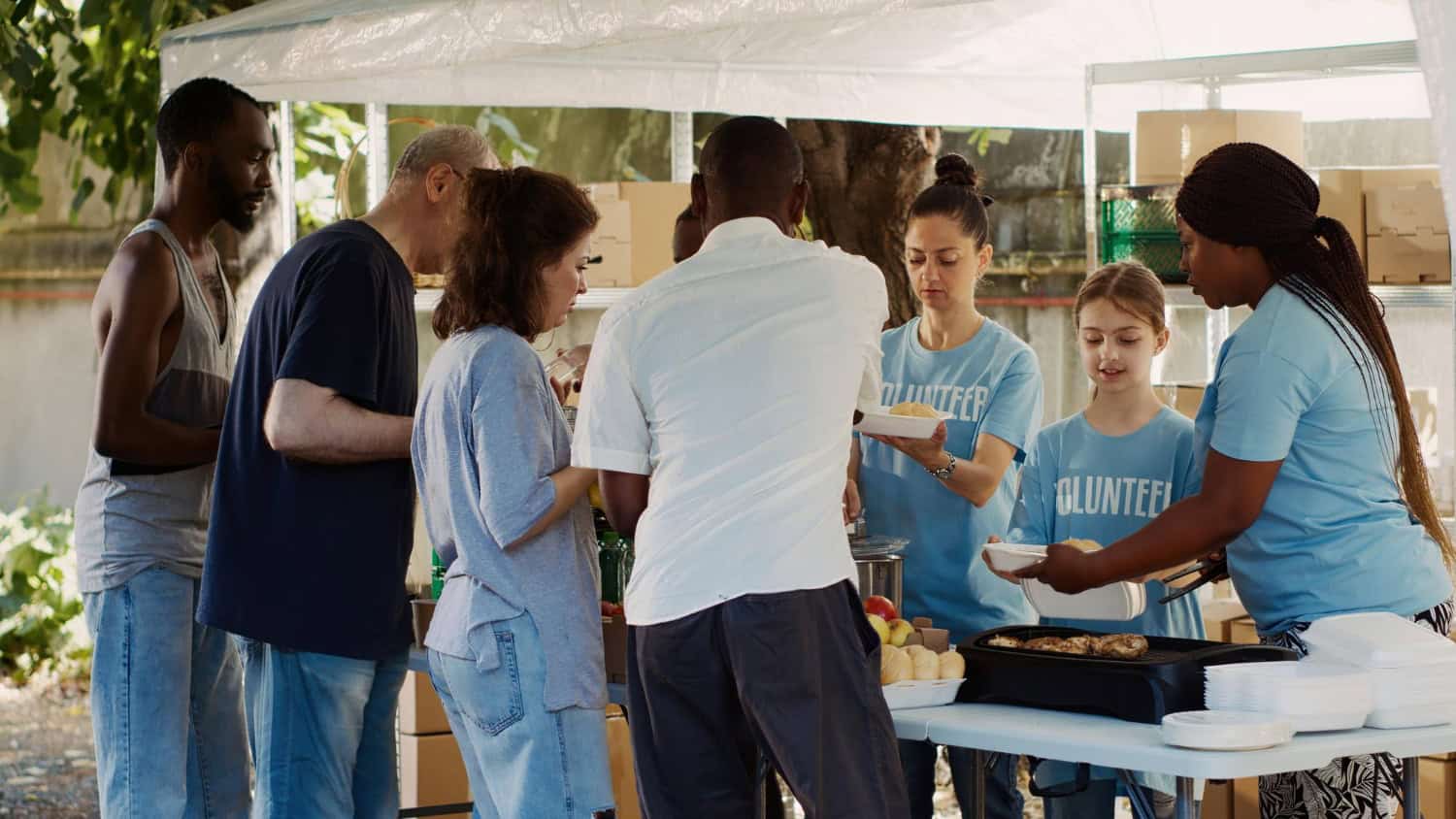
By Zackary Rhodes July 30, 2025
Fundraising has always been about connection. Whether it’s a bake sale, charity run or crowdfunding page, the goal is the same, to bring people together to support a cause they care about. But in today’s digital-first world, there’s a new and powerful model making waves in the non profit sector: peer fundraising. This model doesn’t rely on the organisation to raise the money. Instead it turns supporters into active fundraisers who use their own networks to bring in donations. From birthday fundraisers on social media to community led virtual events, supporter driven campaigns are changing how causes grow their impact.
For non profits looking to increase reach and engagement without dramatically increasing their internal resources, peer fundraising is a smart, scalable solution. It combines the best of community energy and online tools to create a fundraising experience that feels personal, authentic and meaningful.
What Is Peer-to-Peer Fundraising?
Peer fundraising is when individuals raise money for a nonprofit on the organization’s behalf. Instead of donations flowing directly through the nonprofit’s efforts, they are gathered by supporters who host their own mini-campaigns. This can take many forms. Some people run a 5K and ask friends to sponsor them. Others donate their birthday by setting up a personal giving page. Some organize small community events, like garage sales or trivia nights, with proceeds going to the charity of their choice.
What makes peer fundraising unique is the personal element. The donor isn’t responding to a generic appeal from an organization. They’re responding to a friend, colleague, or family member. That personal connection often drives more engagement, more trust, and, ultimately, more donations.
Why Peer Fundraising Works
At the heart of peer fundraising is social proof. When someone sees a friend supporting a cause, they are more likely to trust that cause and want to get involved. People are more influenced by peers than by ads or marketing campaigns. That’s what makes supporter-driven campaigns so powerful. Fundraisers who share their story are not just asking for money, they’re sharing why the cause matters to them. That emotional connection often leads to deeper and more frequent donations. It also spreads awareness to people who may not have otherwise heard of the organization.
This method also has a multiplying effect. One fundraiser might reach 10 people. If 10 fundraisers each reach 10 people, that’s 100 new potential donors. Without expanding your team or marketing budget, you’ve amplified your message through the voices of your supporters.
Benefits for Nonprofits of All Sizes
One of the best things about peer fundraising is it works for big and small organizations. You don’t need a huge marketing department or a big staff to get started. All you need are a few passionate supporters and a clear message. Smaller nonprofits benefit most from this model. It allows them to go beyond their current donor list and tap into the networks of their supporters. This kind of organic reach is often more powerful than cold outreach or broad advertising.
Larger nonprofits can use peer fundraising to supercharge specific campaigns. Events like Giving Tuesday or annual fund drives can be amplified by getting supporters to run their own pages or challenges. By letting your community take the lead, you also build stronger relationships. People feel more connected when they’re given a role. They become more than donors, they become advocates for your cause.

How to Launch a Peer Fundraising Campaign
The first step in creating a peer fundraising campaign is choosing a platform. There are many digital tools available that allow supporters to set up their own fundraising pages, track progress, and share on social media. Look for a platform that makes the process easy for your supporters. The more user-friendly it is, the more likely people are to sign up and participate. You want them to be able to create a page, write a few lines about why they care, and start sharing within minutes.
Once your platform is set, it’s time to create a campaign theme. This could be tied to a specific event, like a walk-a-thon or holiday fundraiser. Or it could be open-ended, like a year-round fundraising option for birthdays, anniversaries, or personal milestones. Make sure to provide supporters with materials to help them succeed. This includes sample messages, images, and ideas for how to spread the word. A little guidance can go a long way in making your supporter-driven campaign effective and enjoyable for participants.
Telling a Story that Inspires Action
At the core of every good peer fundraising effort is a compelling story. People want to know why this cause matters, not in abstract terms, but in real, human ways. Encourage your fundraisers to share personal experiences. Maybe they’ve volunteered with your organization. Maybe someone they love was helped by your services. Maybe they just believe deeply in the mission. Whatever the reason, when fundraisers speak from the heart, it resonates.
Your organization should also provide core messaging and impact stories. These help fundraisers explain what donations do, how much they help, and what kind of change is being made. When supporters feel confident telling your story, they can fundraise more effectively. A strong narrative connects the donor to the cause emotionally. That emotional tie is often the reason someone gives, and why they might give again.
Using Social Media to Amplify Reach
Social media is one of the most powerful tools in your community fundraising strategy. Facebook, Instagram and X (formerly Twitter) allow you to share your campaigns with friends and family. Encourage your fundraisers to post regularly during their campaign. Updates, thank yous and progress milestones keep the momentum going. Visual content like photos, videos and infographics make posts stand out and feel more personal.
As an organisation, you should also highlight top fundraisers or share compelling stories from the campaign. This builds community and encourages others to join in. When people see someone they know fundraising, they’re more likely to donate, or start their own campaign. Hashtags, custom links and social badges make campaigns more cohesive and recognisable. These simple tools tie together many different fundraising pages and platforms.
Supporting and Celebrating Your Fundraisers
Fundraising is hard work, even when it’s done out of love. That’s why supporting your supporter-driven campaigns is so important. Check in with fundraisers, answer questions quickly, and offer encouragement. You can also create a private group or email list to keep fundraisers connected. Share tips, celebrate wins, and provide behind-the-scenes updates from your organization. This not only builds motivation but also deepens the connection between your cause and your supporters.
Recognition is key. Whether it’s a thank-you note, a social media shoutout, or a small gift, showing appreciation goes a long way. People who feel valued are more likely to fundraise again and encourage others to get involved. Your fundraisers are your champions. Treat them like partners, and they’ll help carry your mission further than you could on your own.
Adapting Peer Fundraising for Different Audiences
Not all fundraisers are the same. Students, corporate teams, retirees, and community groups each bring their own strengths and interests to the table. Adapting your peer fundraising strategy to different audiences can make your campaign more inclusive and effective. For schools, you can tie fundraising to service projects or class milestones. For companies, you can introduce workplace challenges or team-based campaigns. For individual supporters, consider birthday or anniversary fundraisers that feel personal and celebratory.
The more flexible your community fundraising strategy is, the more people will find a way to make it their own. Give supporters options, but also provide clear pathways to success. Templates, timelines, and fundraising goal suggestions can help different groups plan their campaigns. People are more likely to participate when they feel prepared and supported.
Measuring Success and Learning from Results
After a campaign ends, it’s important to take stock. How many fundraisers participated? How much was raised? Which messages performed best? What could be improved? Use analytics tools from your fundraising platform to review data. Identify your top fundraisers and what made them successful. Look at how different channels performed and where engagement was highest.
Gather feedback directly from participants too. Ask them what worked, what didn’t, and how you can improve future efforts. This input is invaluable for refining your supporter-driven campaigns. You should also track long-term outcomes. Did new donors from the campaign become repeat supporters? Did any fundraisers transition into volunteers or board members? The real success of peer fundraising often extends well beyond the donation totals.

Making Peer Fundraising Part of Your Culture
To get the most out of peer fundraising, don’t treat it as a one-time tactic. Make it part of your organizational culture. Talk about it in newsletters, promote it on your website, and encourage every supporter to consider running a campaign of their own. Highlight success stories year-round, not just during campaign season. Celebrate your fundraisers like you would major donors or partners. Their work deserves that level of recognition.
You can also create annual peer fundraising events or branded challenges that supporters look forward to each year. This builds tradition and anticipation, while also strengthening your community ties. When community fundraising strategy becomes part of your DNA, your supporters become not just followers, but leaders in your mission.
Common Pitfalls and How to Avoid Them
Like any fundraising method, peer fundraising has its pitfalls. Participation will be low if you don’t explain the process clearly or if the tools are too complicated. People will be unsure of what to say or how to promote their campaign. To avoid this, give clear, simple instructions. Create a starter guide that includes steps to get started, sample posts and a FAQ. Make yourself or a team member available to answer questions and cheer people on.
Another common problem is donor fatigue. If people see too many fundraisers too often, they will start to tune them out. Space out campaigns and focus on quality over quantity. Make each campaign feel fresh, personal and valuable. And don’t forget to follow up. After a campaign ends, thank your supporters and let them know the impact of their efforts. Closing the loop keeps people engaged and will encourage them to get involved again.
Conclusion
Peer fundraising is more than just a trendy method, it’s a shift in how we think about support, connection, and community. It puts the power in the hands of those who believe in your cause the most and invites them to take the lead. With the right tools, support, and storytelling, anyone can be a successful fundraiser. And when people are given a chance to contribute in a meaningful way, they often rise to the occasion. By integrating supporter-driven campaigns into your broader community fundraising strategy, you build a network that grows stronger with every event, every post, and every shared story. You expand your reach, deepen engagement, and create a ripple effect that continues long after the campaign ends.